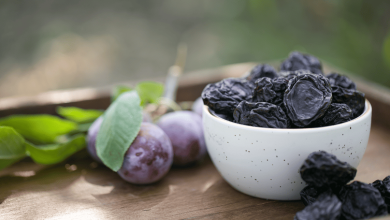Amaranth Grain (Cooked)
Amaranth is a highly nutritious and versatile grain that has gained popularity due to its excellent health benefits. When cooked, it offers a mild, slightly nutty flavor and a soft, creamy texture. This ancient grain is naturally gluten-free and can be enjoyed as a substitute for rice, quinoa, or oats in a variety of dishes. Rich in proteins, essential minerals, and vitamins, amaranth provides a nourishing addition to any diet.
Nutritional Information (per 100g serving)
| Nutrient | Amount |
|---|---|
| Energy | 102.0 kcal |
| Protein | 3.8 g |
| Total Fat | 1.58 g |
| Saturated Fat | 0.0 g |
| Carbohydrates | 18.69 g |
| Fiber | 2.1 g |
| Sugar | 0.0 g |
| Calcium | 47.0 mg |
| Iron | 2.1 mg |
| Magnesium | 65.0 mg |
| Phosphorus | 148.0 mg |
| Potassium | 135.0 mg |
| Sodium | 6.0 mg |
| Zinc | 0.86 mg |
| Copper | 0.149 mcg |
| Manganese | 0.854 mg |
| Selenium | 5.5 mcg |
| Vitamin C | 0.0 mg |
| Thiamine (B1) | 0.015 mg |
| Riboflavin (B2) | 0.022 mg |
| Niacin (B3) | 0.235 mg |
| Vitamin B6 | 0.113 mg |
| Folate (B9) | 22.0 mcg |
| Vitamin B12 | 0.0 mcg |
| Vitamin A | 0.0 mcg |
| Vitamin E | 0.19 mg |
| Vitamin D2 | 0.0 mcg |
Allergen Information
Amaranth is naturally gluten-free, making it a suitable option for those with celiac disease or gluten sensitivities. However, it is always important to check for cross-contamination if processed in facilities that handle gluten-containing grains.
Dietary Preferences
Amaranth is a fantastic choice for a variety of dietary preferences and restrictions, including:
- Gluten-Free
- Vegetarian
- Vegan
- High-Protein
- High-Fiber
- Dairy-Free
Culinary Tips & Advice
Amaranth is incredibly versatile in the kitchen. It can be used in savory or sweet dishes, added to soups, stews, or salads, or even made into porridge. Its mild flavor pairs well with both sweet and savory ingredients, making it an excellent base for breakfast bowls or grain salads. For a quick snack, try popping amaranth like popcorn for a crunchy treat.
When cooking amaranth, be sure to rinse the grains before cooking to remove any excess saponins, which can create a bitter taste. The cooking ratio is typically 1 part amaranth to 2.5 parts water or broth. Simmer for 20-25 minutes until tender.
Conclusion
Amaranth is a powerhouse of nutrition that deserves a spot in your pantry. With its rich protein content, abundant fiber, and essential minerals, it’s not only a gluten-free alternative but a healthful choice for those seeking to boost their diet. Whether incorporated into meals or enjoyed as a snack, amaranth is a fantastic and versatile addition to your culinary repertoire.










